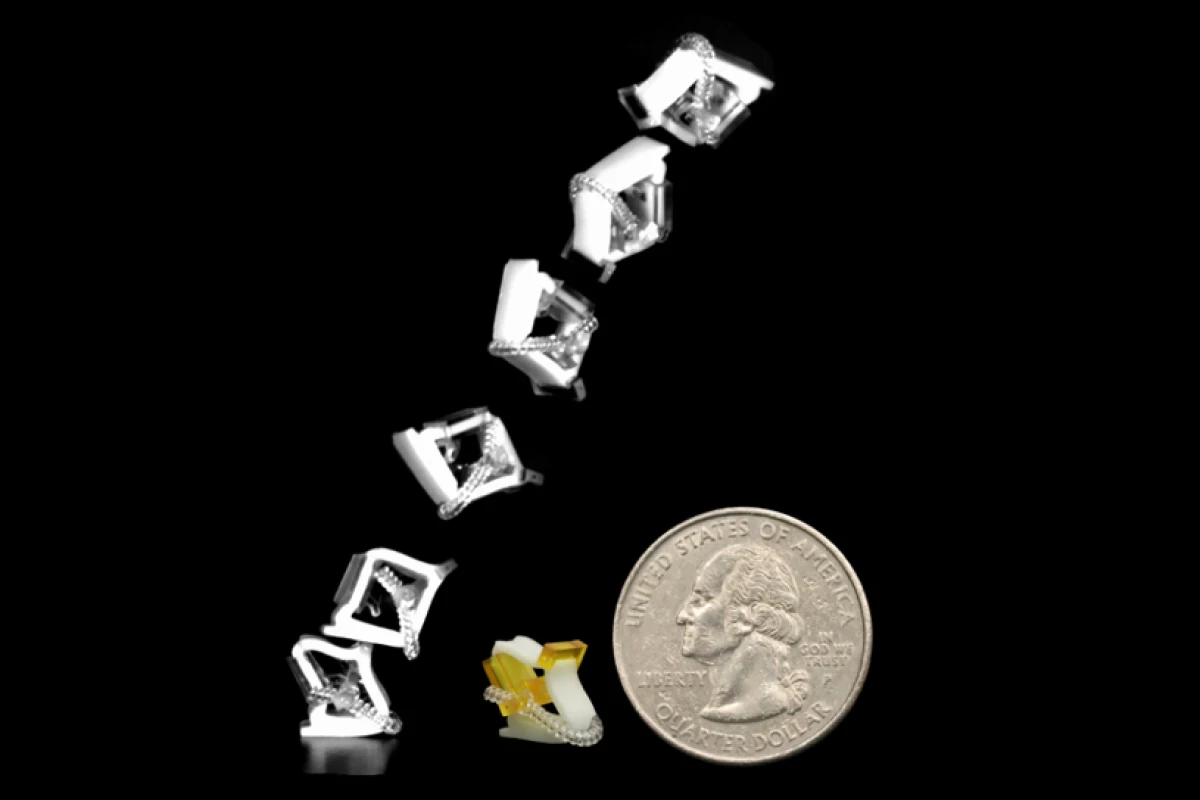Earlier this year, we heard about some tiny robots that used a bio-inspired mechanism to jump high into the air. The makers of those devices have now tweaked the design, creating bots that jump very long distances – potentially allowing them to traverse rough terrain.
Like the high-jumping mini robots that came before them, the long-jumping robots were created at the University of Illinois by a team led by Prof. Sameh Tawfick.
The high-jumpers incorporated a setup inspired by the click beetle, in which a miniature coiled actuator pulled on a beam-shaped mechanism.
As the actuator was progressively twisted tighter, it caused the mechanism to gradually buckle and store elastic energy. Once the mechanism reached a certain threshold, all of that energy was suddenly released and amplified, shooting the robot upwards.
The new long-jumpers utilize a similar system, although it's inspired by the springy legs of the locust.
At the heart of the setup is a 3D-printed elastomer four-bar linkage, which gets preloaded via the twisting of a coiled actuator (the latter is made of heat-treated nylon fishing line). Once the stored elastic energy is released, the robot jumps both vertically and horizontally, covering much more horizontal distance than its click-beetle-inspired predecessors.
Tawfick and colleagues built and tested 108 such robots, the smallest of which weighed just 0.216 grams and was capable of jumping 60 times its body length. It is hoped that battery-powered, sensor-equipped descendants of these bots might someday find use in applications such as the monitoring of crops or internal inspections of machinery.
"To my knowledge, this is the first time anyone has demonstrated long jumping in insect-scale robots," said Tawfick. "This is significant because it gives the robot planned mobility, where it can now jump from A to B, traversing terrain rougher than its own size."
You can see one of the robots in action, in the video below.
A paper on the research was recently published in the journal Smart Materials and Structures.
Source: University of Illinois




